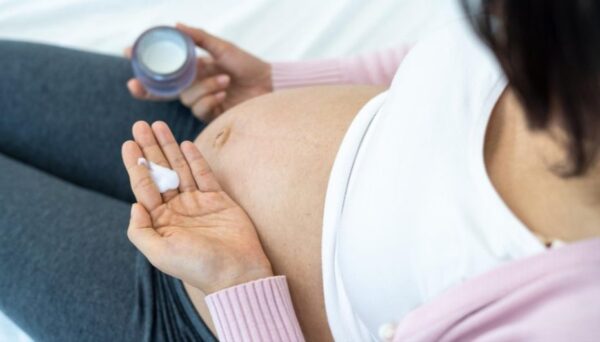Lifestyle
How to calculate your safe period to avoid pregnancy

A safe period is a time when your chances of getting pregnant after having sex are the lowest as compared to other times.
Knowing the safe period of the month is necessary if you are not trying for a baby.
However, it should be noted that there is not a 100 percent guarantee that having sex during this period will prevent pregnancy for sure.
This is a kind of natural contraceptive method that can be fully effective only when you know and understand your menstrual cycle accurately.
However, a change in the cycle might affect your calculation which may cause discrepancies, in turn, leading to an accidental pregnancy.
Read on to know more about the safe period of the month and ways to calculate it.
What is the safe period for having sex?
A menstrual cycle is calculated from the first day of your period to the first day of the next period. Therefore, in a typical 28-day cycle, ovulation usually occurs around day 14, when the chances of getting pregnant are high. Sperm can live for three to five days inside a woman’s body, and a woman’s egg will live for 12 to 24 hours. Therefore, you are likely to get pregnant if you have sex anytime on the five days before ovulation and ovulation day.
But this does not mean that the remaining days are safe for having unprotected sex. Regardless of when you have sex, it is recommended that you use birth control methods to minimizes the chances of pregnancy.
Read on if you wish to learn how to calculate the safe period when the chances of unwanted pregnancies are less.
Methods that might help you calculate the safe period
The methods that may help in calculating the safe period are:
- Tracking the fertile window
- Fertility awareness-based methods
1. Tracking your fertile window
Tracking of the fertile window helps you determine your fertility period and avoid unsafe sex. It may take several period cycles to understand the fertile window correctly. And, this works if your periods are regular and the length of the cycle is uniform. Also, it requires you to track your period with precision for months.
Here is how to track the fertile period.
- At least for 6 to 12 consecutive months, note down the day you begin your period and count the days of the cycle until you start your next period. (First day is when you begin bleeding).
- Then determine the shortest and longest number of menstrual cycle days. From this, you may now calculate the fertile window based on your average menstrual cycle.
- Subtract 18 from the length of the shortest cycle. This will give you the first fertile day of your average menstrual cycle. For example, if it was a 24-day cycle, day 6 is the first fertile day.
- Subtract 11 from the length of the longest cycle. It gives the last fertile day. For example, if it is a 32-day cycle, day 21 is the last fertile day.
- Therefore, the fertile period is between day six and day 21 when you need to avoid unprotected sex.
This method is also called the calendar method and is used by many.
2. Fertility awareness-based methods (FAMs)
Fertility awareness, also known as natural family planning, is a way of predicting safe and unsafe days of your menstrual cycle. The methods under this category are usually based on certain signs your body gives in response to the hormones that cause ovulation.
How do FAMs work?
The FAMs work by alerting you on your ovulation days. Once you know your days of ovulation, you can avoid sex or use a contraceptive to avoid getting pregnant.
These methods could help you know the unsafe days that come before and after ovulation. You may also track the fertility pattern, marking the days when you are fertile, and days you are not, which can be useful when you want to conceive. However, you have to be careful as the pattern may change with cycles.
What are the different fertility awareness-based methods?
Here are a few FAMs you can try to avoid an unwanted pregnancy.
1. Basal body temperature method
The basal body temperature will be low in the initial phase of your menstrual cycle. It increases slightly after you start ovulating (about 0.5 to 1°F) and remains high for the remaining part of the cycle. It falls again before you start your next period. Tracking your temperature day by day will help you understand when you start to ovulate.
Once you know the dates, avoid unprotected sex for three days after ovulation to avoid pregnancy. Although this method is not a100% reliable, it is widely practiced by many women to this day.
2. Cervical mucus or ovulation method
The hormones that control the menstrual cycle also stimulate the cervix to produce mucus, which usually gets collected in your cervix and vagina. The quantity and consistency of the mucus change just before and during ovulation.
The time when the mucus becomes clearer and more slippery than it is at other times is when you are most fertile. Once the ovulation is complete, you may experience dry days where there is no or little discharge. You can learn to recognize these changes to predict the fertile and infertile days. However, this is also not a highly reliable method, as the levels of discharge vary based on hormonal changes.
3. Ovulation predictors
You may consider buying test kits that can help predict ovulation. They may be helpful in planning pregnancies, but you cannot completely depend on them to avoid pregnancies.
Advantages of using FAMs to avoid pregnancy
- Inexpensive, convenient, and safe to use (as no hormones supplements or invasive devices are used).
- Develops communication, responsibility, and cooperation among partners.
- Helpful in establishing an optimum fertility phase to plan a pregnancy.
- Acceptable for couples with religious concerns about artificial contraceptive methods.
- No medications involved.
- You can get calendars, charts, and thermometers easily.
Disadvantages of using FAMs to avoid pregnancy
- The failure rate is high as an accurate prediction of fertility is difficult.
- Can be tedious, as you have to keep track of your infertile days.
- Less number of safe days for indulging in sex.
- Training is vital.
- Not effective if the periods are irregular.
- Takes several months to monitor the cycle patterns.
Contraception methods during safe period
Ideally, it is good to use contraceptives even during the safe period to avoid pregnancy. You could use condoms, spermicides, natural family planning, oral contraceptives, implants, contraceptive rings, patches, IUDs, or surgical interventions including hysterectomy, tubal ligation, tubal sterilization, and vasectomy. However, talk to your partner and your healthcare provider before determining which method is the best.
Next, we answer some of the common queries about the safe period to have sex and avoid pregnancy.










